Interviews with Past Winners
Takuma Yamazaki
“Sound of Drawing”
2018 Grand Prix
Mr. Takuma Yamazaki won the Grand Prix in the KOKUYO DESIGN AWARD 2018, getting chosen out of a total of 1,289 entries. His design “Sound of Drawing” started with his noticing that stationery seems to be avoided by people with visual impairments. The work introduces a new form of stationery and communication by amplifying the sound created by the friction between pencil and paper when writing or drawing—the auditory information. We asked the designer Mr. Yamazaki about the ideas he put into his entry, and his impressions from having participated in the competition.
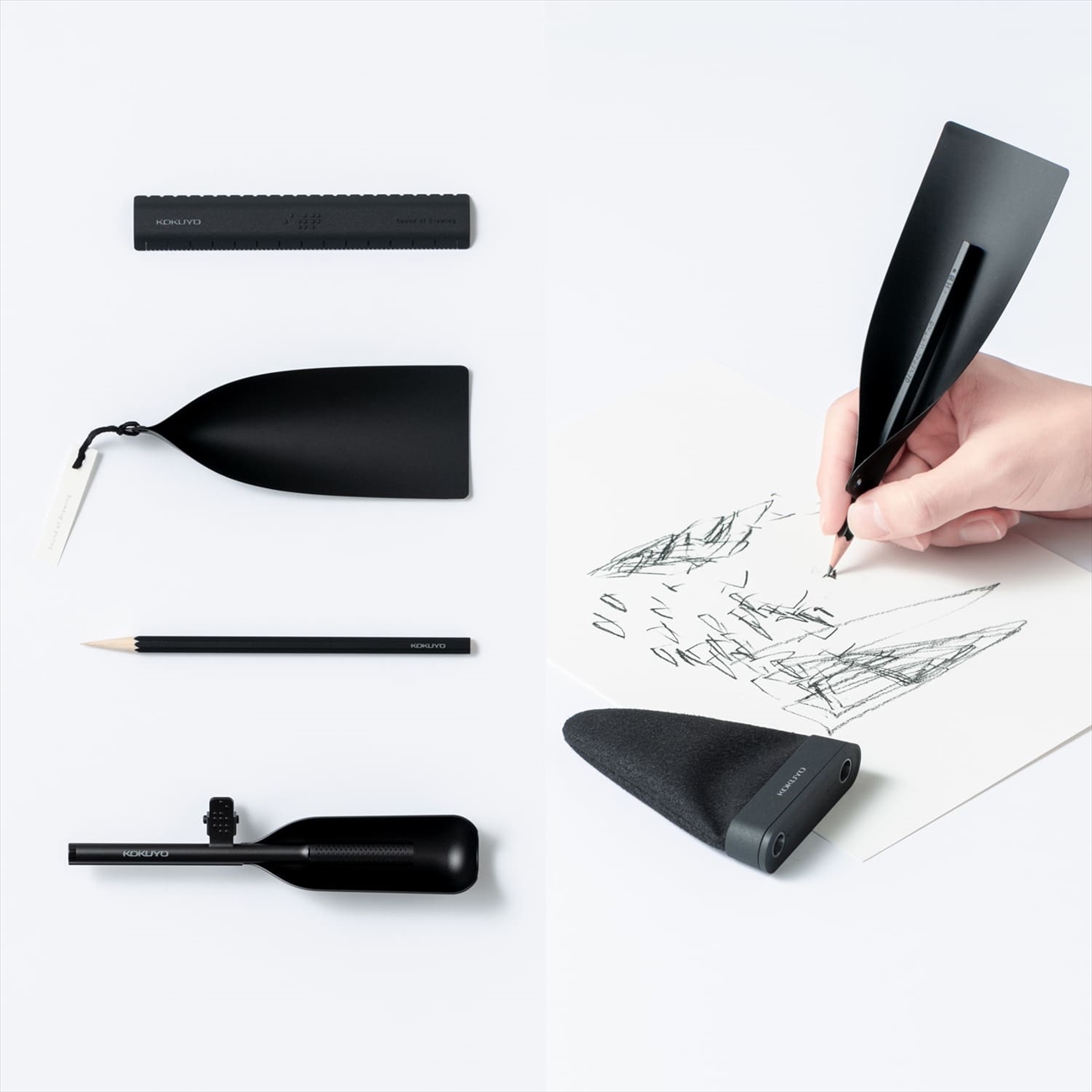
The award’s themes are always something like goals
―― First, tell us what prompted you to enter the KOKUYO DESIGN AWARD.
Yamazaki: I had entered the competition with a friend once before, when I was a student. This was the first time I’d entered since then. I thought it was high time I put myself to the test again as an experienced professional designer. The KOKUYO DESIGN AWARD is a well-known competition, and lots of designers take part. It’s a very difficult competition, because they judge not only your design, but also things like your presentation skills, and even your design’s potential for mass production. I wanted to know how I rank as a designer now.
―― How did you come up with your design idea?
Yamazaki: It actually started from something very small. Early one morning, I was thinking in my quiet room. Then, I noticed how beautiful a sound the pencil makes when you draw with it. I started to think about whether I could develop that sound into something.
―― Does that mean your idea didn’t come from the theme “BEYOND BOUNDARIES”?
Yamazaki: Of course, I thought about the theme all the time, but I would say I honed my idea by focusing more on something that I’m passionate about. I thought of the theme as something like a goal, so I used it as a guide to compare my idea against.
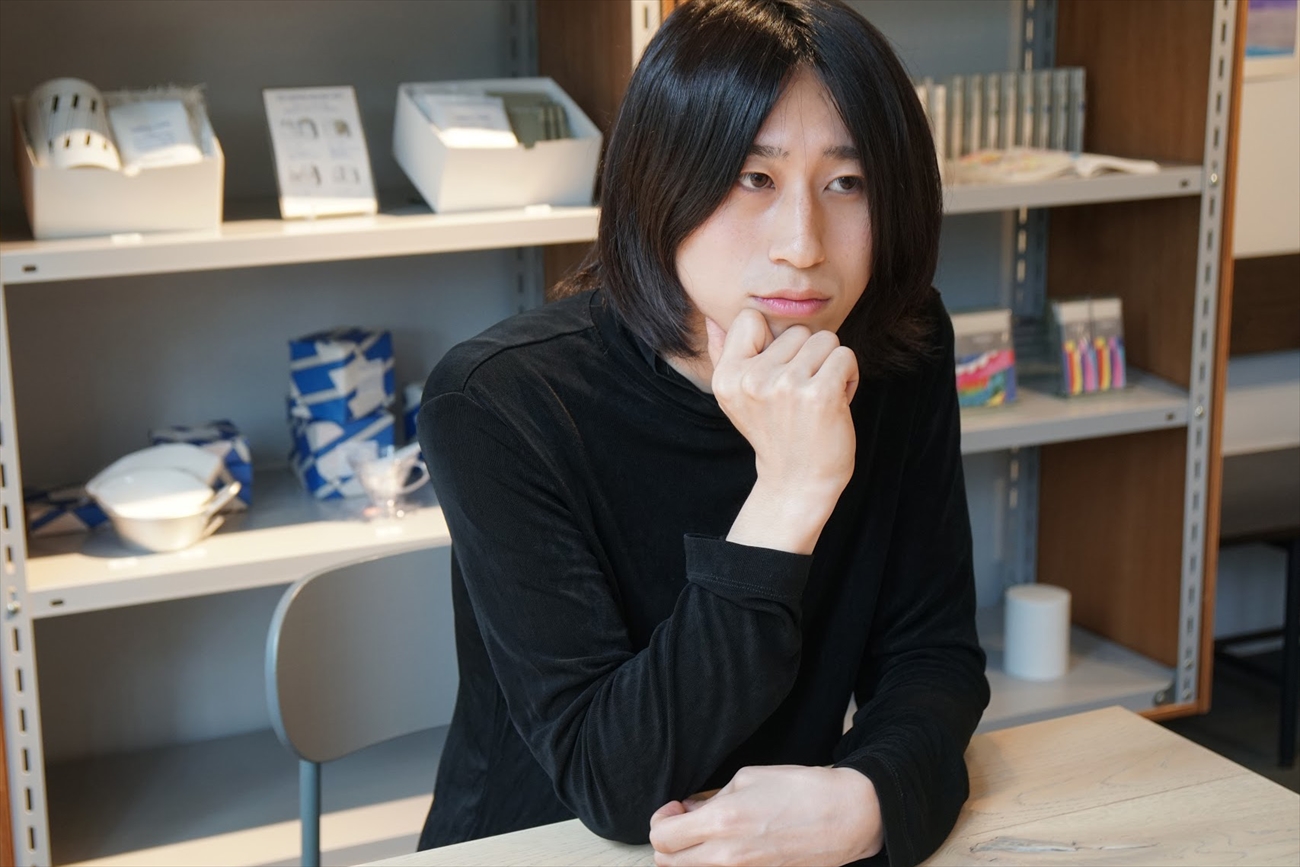
Mr. Takuma Yamazaki
Let the judges use their imagination
―― At the Initial Judging, your presentation sheet focused on the design’s concept, and did not give any details about its uses.
Yamazaki: My core concept of enjoying the timbre of sounds generated from the contact between paper and pencil was clear. However, I hadn’t completely determined the details of what it was or how it could be used. I thought that to decide on its uses at that point without due consideration would be to underestimate its possibilities and impose limits on them, because it could be a drawing tool for the blind, or a musical instrument—I had several ideas and found them all promising.
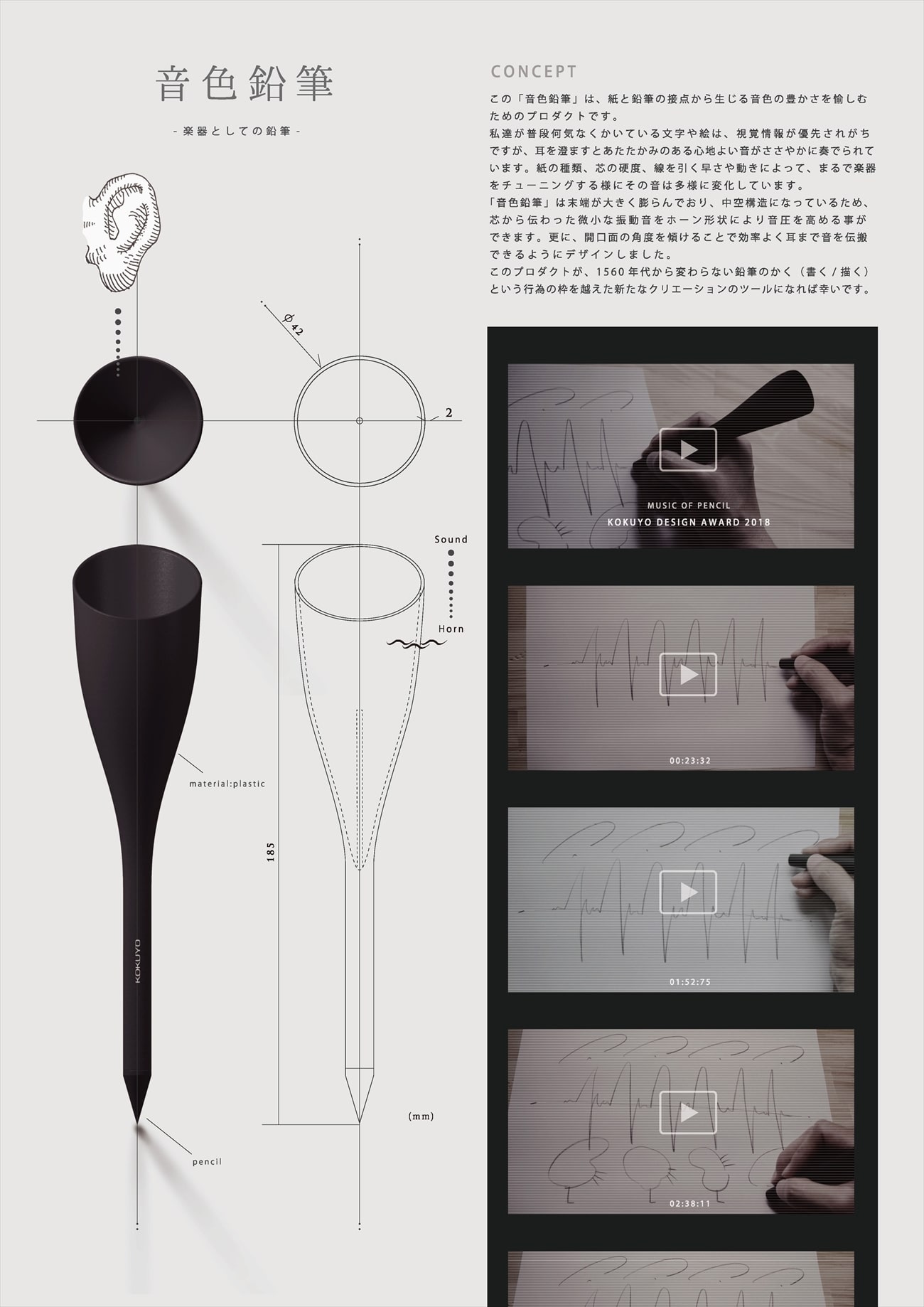
The presentation sheet for “Sound of Drawing” for the Initial Judging
―― In fact, there was a debate over the absence of an overall view of your design in the Initial Judging, with some judges for it and some against.
Yamazaki: Since its uses and situations of use were not concrete, I aimed to make up for that by creating my presentation sheet in a way that would enable the judges to feel my design’s potential. For example, I tried to express the product’s feel and structure of amplifying sounds as concretely as possible, and used images that looked like screencaps from a video in the presentation sheet, so that people would be interested to know what it would actually look like, and use their imagination.
Don’t forget the users
―― After passing the Initial Judging, you made how and where your design could be used more concrete through a workshop with people with visual impairments.
Yamazaki: When you create something that has never existed before, you won’t know how it’s going to work unless you actually try it. I always make sure I don’t forget the people who will use my designs. An acquaintance of mine who has a visual impairment helped me with the workshop for trying out the prototype. There were some walls at first, but we all quickly became friends during the sound quiz game, in which a percussionist also took part. All formality fell away naturally while we were having fun playing the game. I think this experience of having made new friends clarified what I wanted to propose through this work.
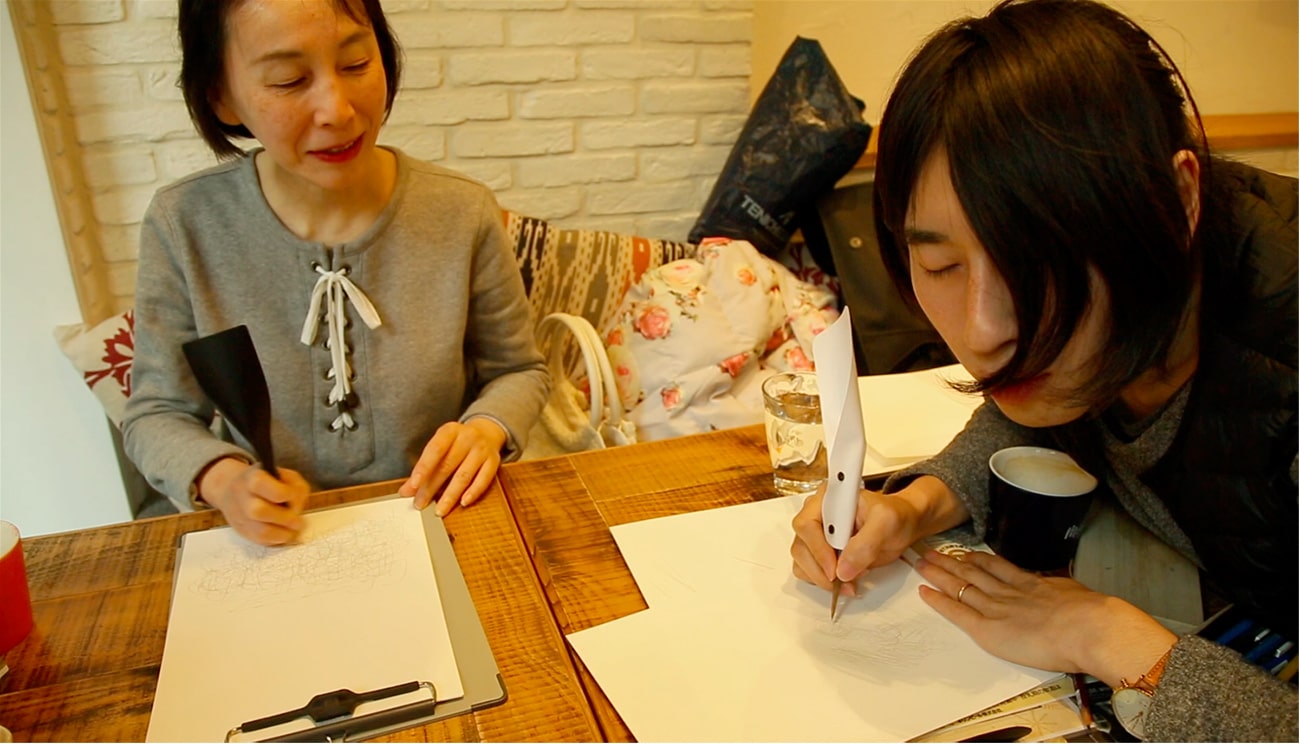
A scene from the workshop
―― At the Final Judging, you also made an impression by showing various prototypes. What were you particular about when making the prototypes?
Yamazaki: I was careful about the overall weight distribution of the design. My goal with this work was not about making a product itself, so I didn’t want the judges to focus on that too much. What I really wanted to propose was the completely new world and way of communicating that would be created by having my work as a tool. So, I tried hard to maintain a balance between getting across my original intentions and creating a good product design.
―― The product that you proposed in the end was very simple and almost inorganic, but that’s because it was based on those kinds of calculations, isn’t it?
Yamazaki: It was like extracting the “scents” from something. I think mine was the complete opposite to “Palletballet” by the Indian designers Soch who also won an award. Part of the appeal of their design is its strongly individual smell. I also basically love that kind of work and like to create very intricate product designs, too. I think that wouldn’t have been the right thing to do for my entry this time though, because the concept was about not relying on sight. I envisaged from the start that people who don’t have visual information would also use my design, so I wanted to remove complexity as much as possible and leave just those elements that were really necessary.
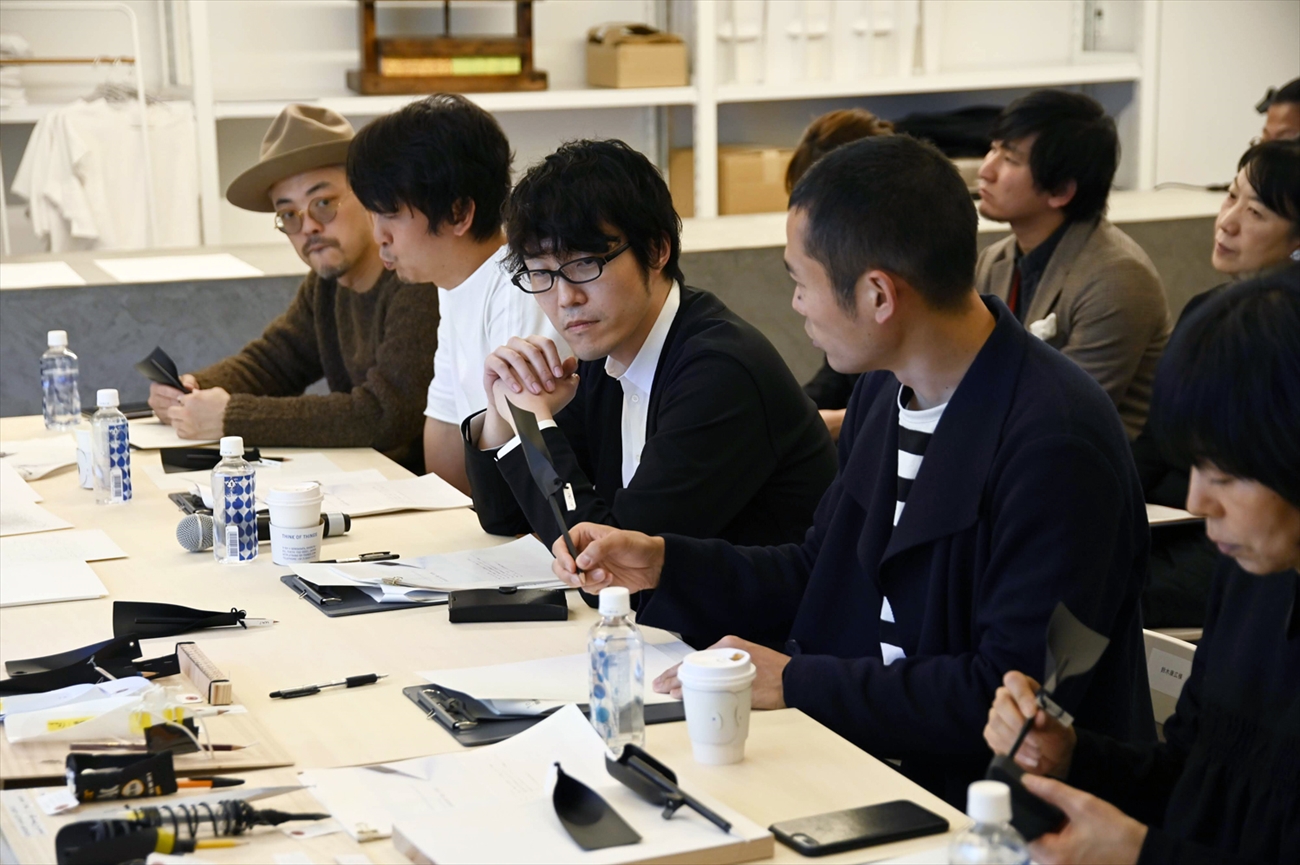
At the Final Judging. The prototypes were passed to each judge. The various materials and prototypes produced in the testing process were also presented with them.
Looking at skills that are necessary in order to work in society as a designer
―― Was there anything in the presentation at the Final Judging that left an impression on you?
Yamazaki: It’s a comprehensive assessment that doesn’t just look at your work, but also at your presentation skills—such as how you structure the material and how you speak. This is different from other competitions where you just send in your design and it gets evaluated. I felt that in addition of course to looking at the quality of our ideas and products, the judges were also looking at our ability to communicate the appeal of what we had made to the maximum—a skill that’s necessary in order to work in society as a designer.
―― Has winning the Grand Prix made a difference to your career as a designer?
Yamazaki: At the Award Ceremony, Oki Sato said to me, “You won’t have time to enter competitions anymore.” At the moment, I’m working as a designer for an electronics manufacturer, but I also work as a freelancer. Some of the job offers I’ve had since winning the award have come my way because I’m a KOKUYO DESIGN AWARD winner. I was also astonished by how my number of followers on Twitter increased nearly tenfold after the award.
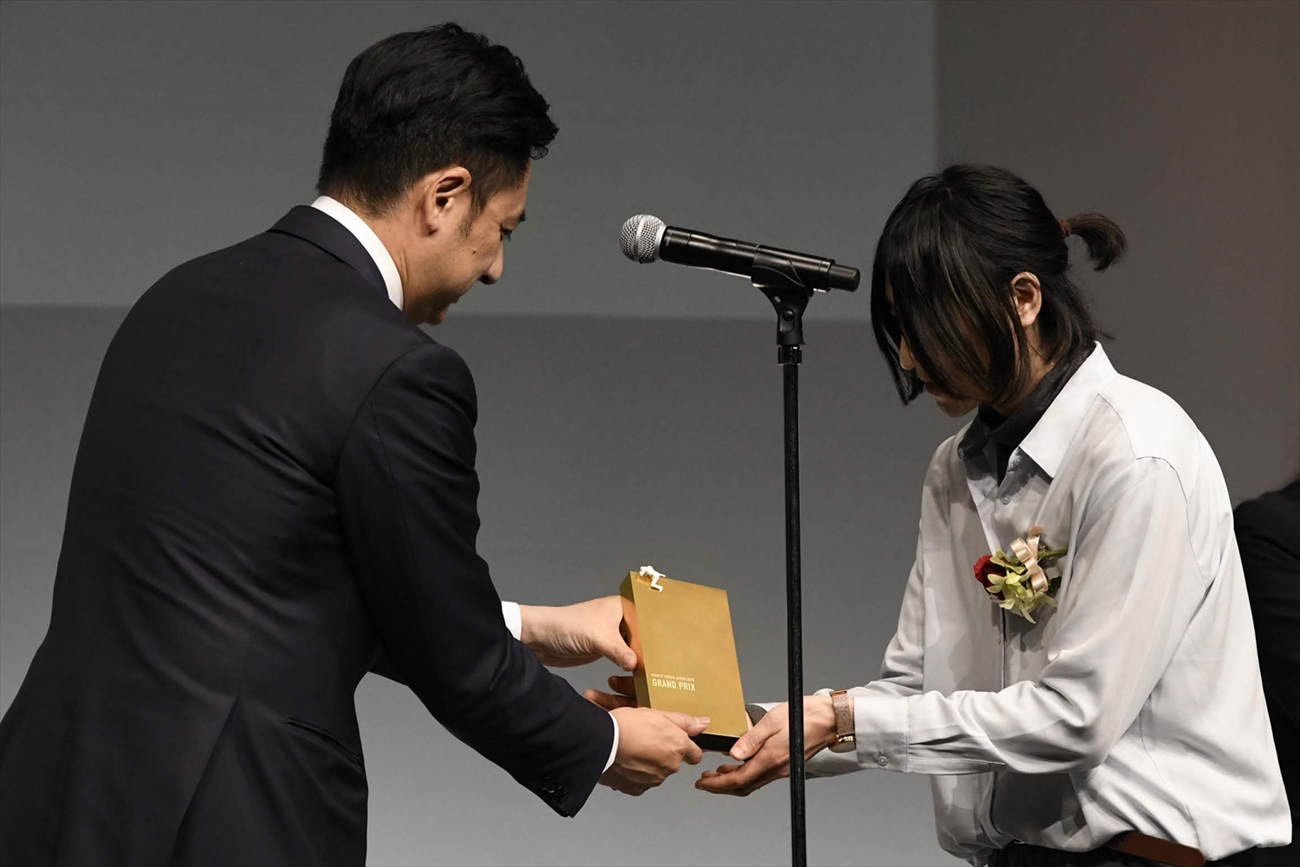
Mr. Yamazaki also won the Audience Award, which is selected by the audience at the Award Ceremony
It doesn’t have to be perfect
―― A workshop for “Sound of Drawing” was held the other day, and the process of turning it into a commercial product has begun. How do you expect things are going to develop moving forward?
Yamazaki: At the exhibition after the award, I saw a little child immersed in using a “Sound of Drawing” pencil, enjoying the amplified sound it made. When I submitted my design, I didn’t really imagine targeting children as users, but when I saw this, I felt that this super-analog tool could provide a true sound that no computer or smartphone can.
―― As a final thought, do you have a message for anyone thinking of entering the competition?
Yamazaki: Given how the uses of my design have been expanding even since the award, my work is certainly not complete. Of course, the quality of your design is important, but I also think if you have a solid core idea―goals you want to achieve and challenges you want to address—then especially in the Initial Judging stage, you should go straight at it head on, even if your design’s still a work in progress. Of course, how you convey your idea in your presentation sheet is key. If you can properly express your passion about how this is still just the bare bones but has the potential to get fleshed out, then the judges will add their own ideas and insights, and help your design take flight. I believe this is a competition where this can happen.
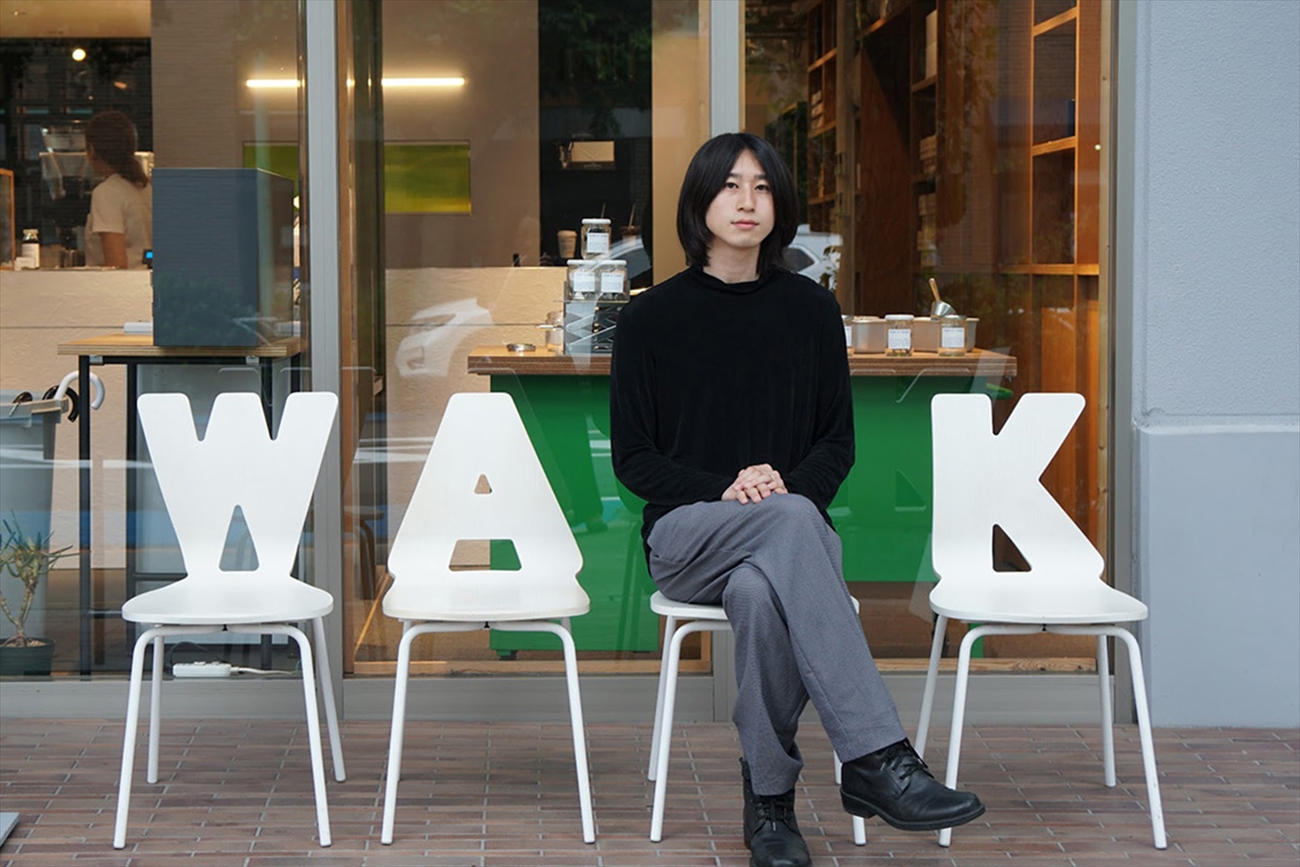
Also check out the article on the workshop “Sound of Drawing: Communication that overcomes the boundaries of vision,” which was held in June, 2019.
https://www.axismag.jp/posts/2019/07/137345.html
























